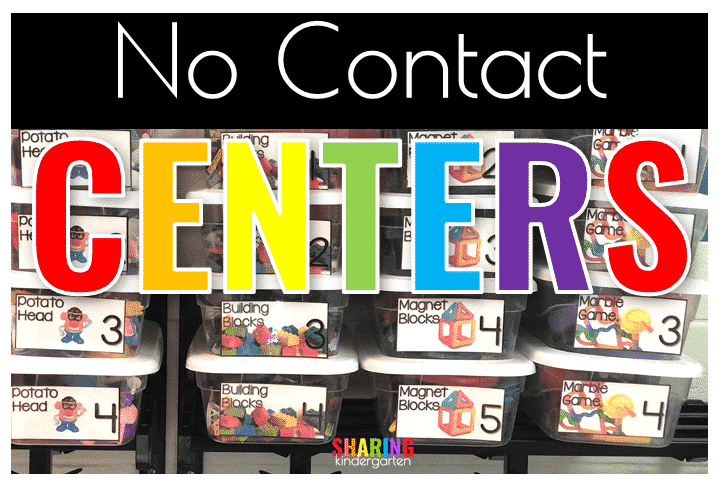
What are No-Contact Centers? Let’s talk about this and so much more. The big question in education is how can we keep students in one room, engaging our learners, and still allowing them to be well… KIDS?! Every school and every district will have different needs, but one thing I am sure that will be the same is this: no contact. So let’s dive into how we can still make and manage no-contact centers in Kindergarten.
What Do I Call Centers?
Every teacher, school, area, and so on call different thing in their classroom by different words. When I say centers, some of you will instantly think about ELA activities or Math things. Centers in my classroom always start with PLAY and move towards skill building in the month of August.
Make sure you check with your specific school about what you can and can’t do!
We play as we learn to make a self-selected choice, play in that select area for a period of time, clean up after ourselves, and then move on to another activity. All of these are skills I need my learners to master so they can eventually work on skill-building.
My first thought with no contact centers was HOW to make this work with PLAY. My big thought is how we, meaning the class, must master play first. We won’t have typical Kindergartens this year, but instead, we will most likely have a hybrid group of students who have been home for quite a while and somehow didn’t finish a pre kinder experience. These facts matter. Diving into the curriculum early may not be our best bet this year.
The Before Picture
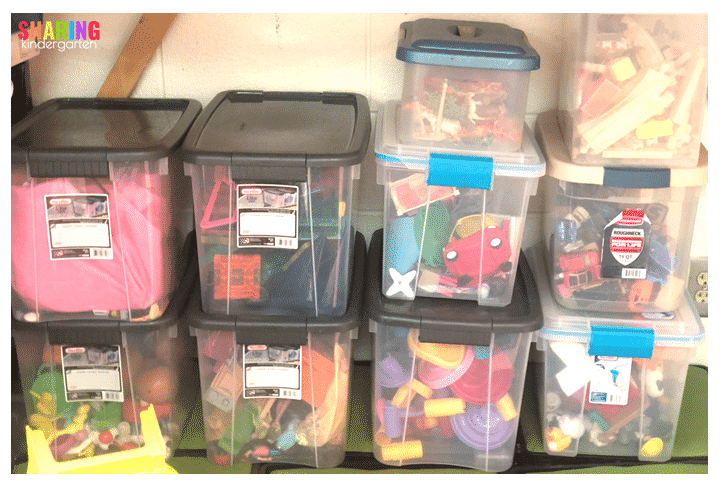
Here is an image of my play activities in my classroom. We typically put one tub on a table and work with students to share, take turns, and get along with each other. This is a huge skill we typically work towards in Kindergarten.
We clean these toys regularly but students typically touch them together at a table. I want to keep the toys, but I have to work on how to allow my learners to play without contact.
The Plan
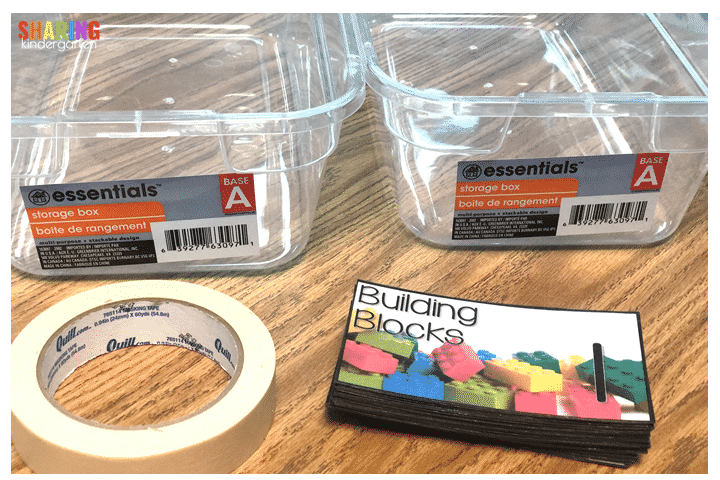
My solution to no contact centers seems pretty easy; break down the larger bins into individual bins so students can still have access to the toys, but not access to sharing toys.
I went to The Dollar Tree to grab LOTS of bins. These clear storage boxes will work great. I also added some no-contact center labels for each bin. Since I am working through how this will work in my classroom, I am applying the labels with tape until I have everything sorted, then I will come back with hot glue to secure them.
I wanted bins with lids, items in bins to be enough to engage students for a short period of time, toys to limit their movement from a designed area (think cars, trains, etc.), and to provide activities in the bins that can be cleaned. These bins came from The Dollar Tree.
Sorting Items
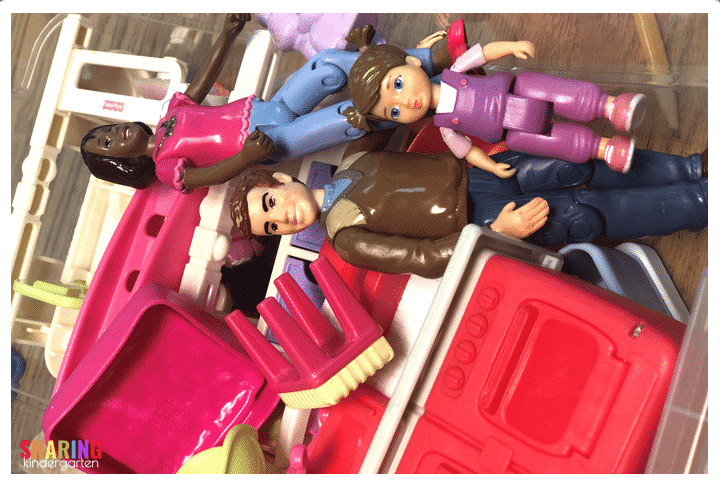
I went through each large toy bin, one by one. I put away any toys that did not have 100% hard surfaces or anything I couldn’t clean, like foam or cloth. Those will not be going to be used this upcoming year.
I also have to make sure each bin has enough toys in it to keep students occupied, but that the lid will still close. Working through each toy bin actually took me quite a bit of time. More time than I thought. I did not want to rush through it and have issues when we go to centers live with students. This isn’t a dump and rushes through the job.
Next, I have to take time to make each small bin work. You can see my family and house items. I took the large play house away and divided up the furniture by rooms into 4 small bins. Each bin also gets people and a baby.
All my Lego centers have wheels and a person. Then, each marble game has bases and a marble. Next, potato heads have matching parts for arms and ears, and a variety of items to make them silly. As you can see, take this time NOW to save you headaches later.
No Contact Centers That Will Stay All Year
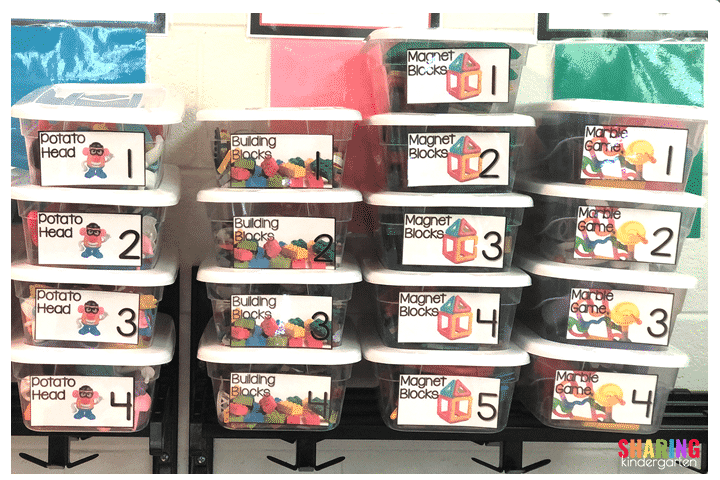
Next, I made sure to label each bin with a number. I envision students having a favorite doll they want to play with that is in Doll #2 bin or a Lego man from Lego #3 bin. Since we desire no contact from student to student, labeling bins this way may be a huge help in the long run.
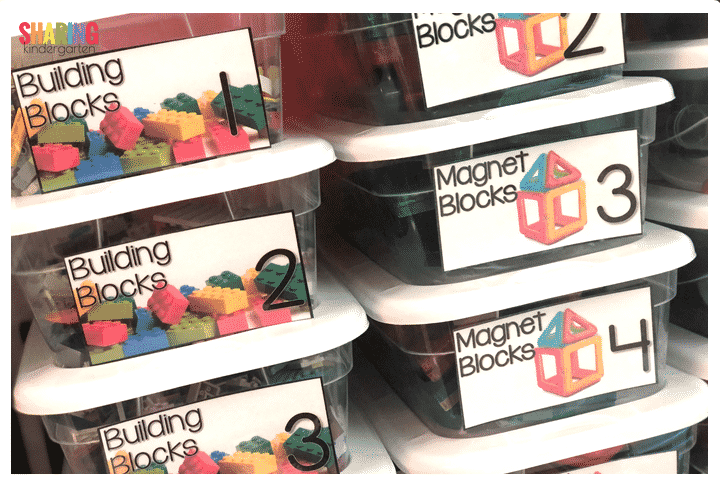
All the bins that are in clear containers are bins that will stay in there the entire year. These are the classic toys we play with often and year after year.
Just having this done reduces my stress level so much. Rainy recesses are no longer going to be an issue. We can do this! And I will explain my no-contact plan soon, too!
Bins that Can Change
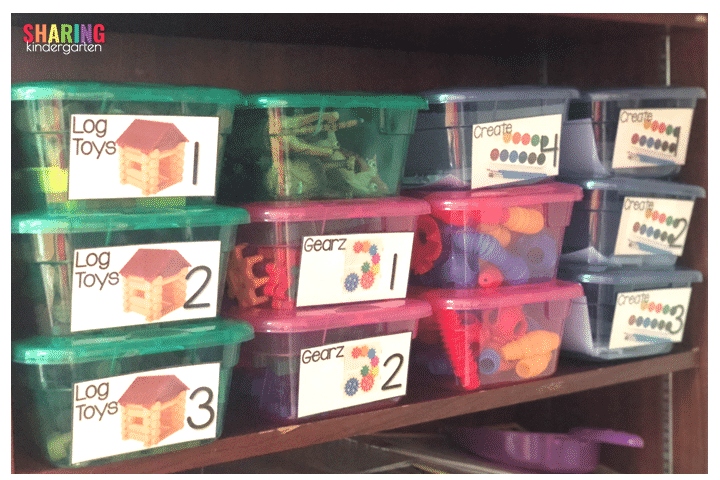
Next, I grabbed some colorful bins at The Dollar Tree. These will be bins that I will change out material from based on student interest. My students generally like these materials, but don’t play with them ALL the time or these bins may have materials that I need to replenish or restock, such as art.
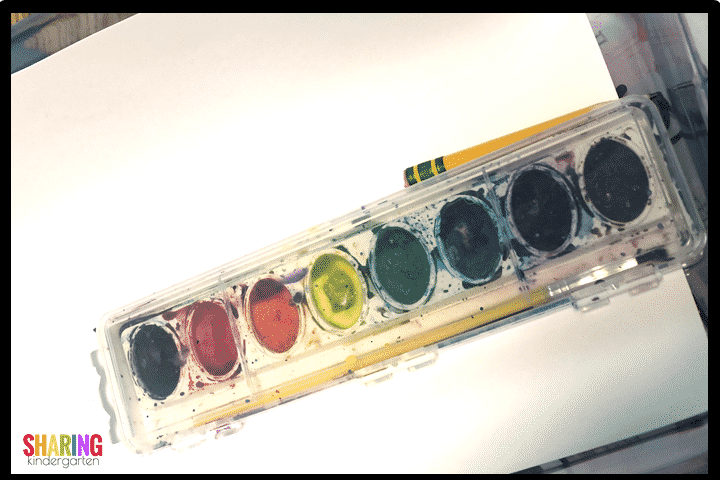
One example is this create bin. To start the year off, I put in a pencil, an older set of watercolors, and paper. I do not give my new kinders new paint. We learn how to use watercolors then I break out the nice sets. I know that I will have to clean these materials and provide new paper to students.
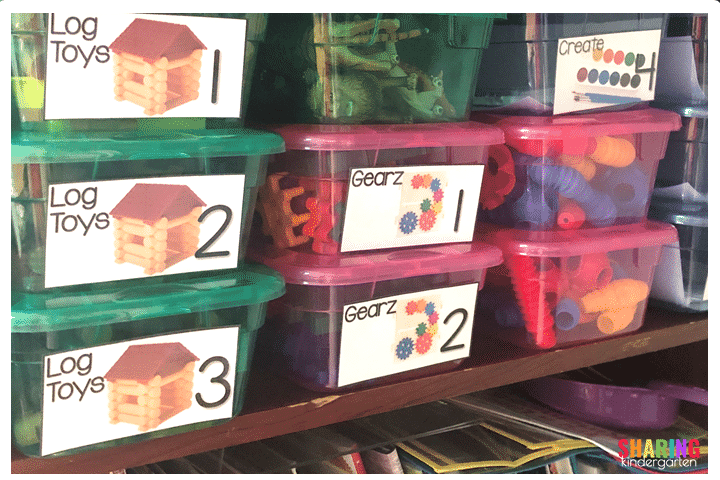
At first, I plan to have these bins rotating. I will change these out every few weeks based on student interest. But I am considering applying these labels with Velcro instead of hot glue so I can change them around.
You can also see some bins I need labels. Since I am working out what fits where I have some more labels to create! Since I am organizing and problem-solving this out as I go, I am not perfect. Don’t be frustrated if you aren’t either.
Storage
I plan to house all these bins on a bookshelf. I will be clearing out the books you see below the picture I showed you above, so all these bins will fit in one area. This will allow my students to continue to make self-selected choices, but now they will make just a choice for themselves.
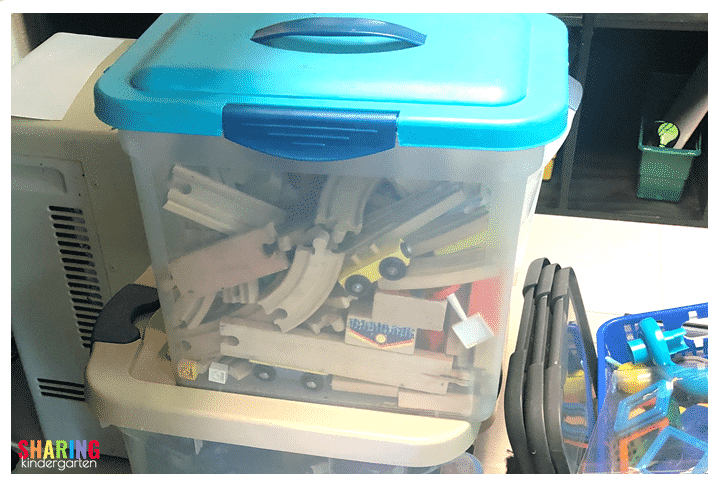
How Many Bins
Also, consider your class size. You will need at least twice as many bins as the students in your class. This allows them to play and change out bins. And this leads me to the next step in the no-contact process.
This is also a great time just to clean out! Check out this less-than-flattering picture. First, I need to sort a few more bins and I got through a lot of bins. Then, I found trash, lost pieces, and broken pieces. Next, I also have some items that just don’t fit in those small bins.
How to Make No Contact Centers Clean
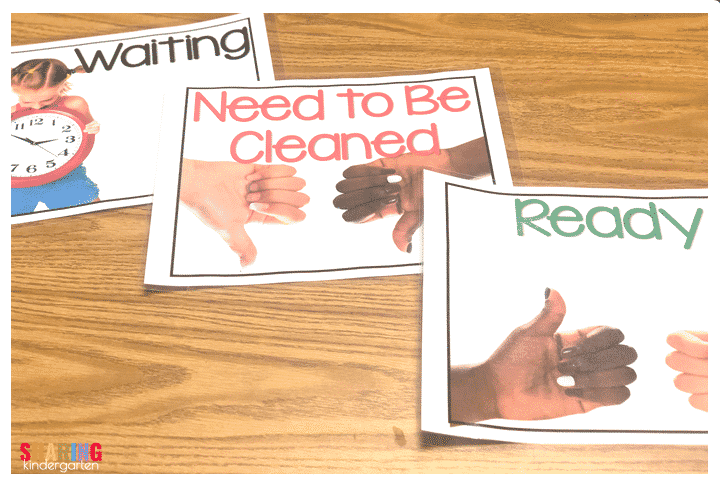
The first step in making no-contact centers clean is to give students clean centers to start with. This means cleaning all those toys that you are putting in those small bins. I know we didn’t get a chance to clean before we left for the summer.
Next, give them a ready sign. (My signs are included in this download here.) I won’t put items on the center shelf that are not ready to be played with. In addition, that area will have a sign stating those items are ready to be used.
Set Aside a Place to Use that Need to Be Cleaned
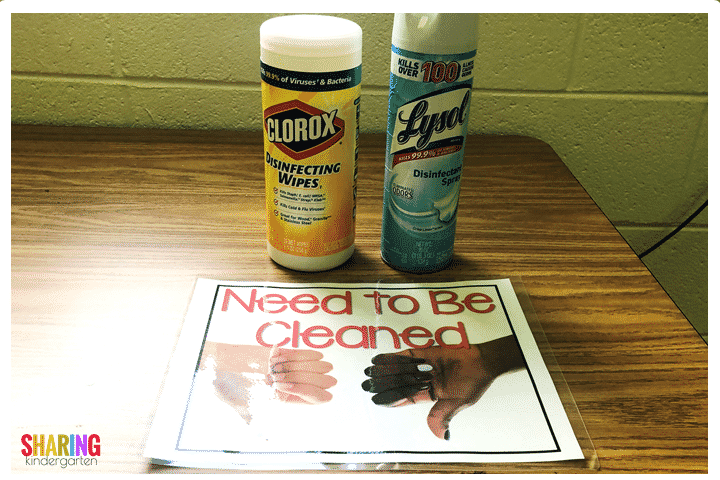
Next, set aside an area away from the clean items for students to return bins to once they have played with them. I suggest this location be away from the “ready to be played” items to avoid any confusion or mistakes.
Then, train your students to play with their items until they are done. I am going to stress to students that they really are selective with their choice bin and when they are done with it. Once a bin goes in this “Need to be Cleaned” pile, it can’t be played with again for a whole day! (More about this is below.)
Finally, train your students to take their bins to this “Need to be Cleaned” area to be dropped off. All items in their bin should go back in the bin and the lid should be returned. Then, the bin should be placed in this area.
Some Ideas for Your Sanity
Another thought, if you think you may have time to return to this activity, I suggest students place their bin in a cubby or another location. One example would be picture day. If you are using these bins and then get called to pictures, students may need to leave bins out or place them in cubbies because they may get to return to the bins later that day.
Cleaning and Waiting Period
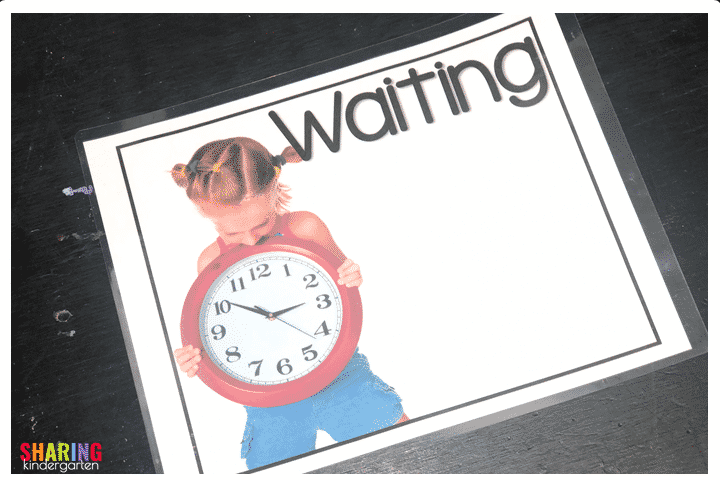
When I can, I know cleaning items according to the protocol I am given is a must. (I haven’t been given that information yet, but I am also assuming it will vary from area to area.) First, I plan to clean items at least once a day. I am hopeful I may be able to clean twice, but I am not sure of that. But, I plan to clean items at the end of the school day when students are not present.
Once the bins are clean, I am not going to return them to the “ready” pile just yet, I am going to put them on hold for a given amount of time. I have heard some daycares have said 24 hours.
A Few Things to Consider
As you can see, you will need a lot of bins! I don’t think you will need more toys, because you are just breaking down all the toys you already have into smaller amounts. You also need to be careful of students who open a bin and look, but don’t play. That bin may be considered “needs to be cleaned” and off limits for others for 24 hours.
I will be encouraging my students to make self-selected choices they want to play with for a chunk of time. And I will encourage my students to be thoughtful in deciding whether they are done with an item. I want my labels to reflect what is inside each bin to help with their choices.
Also, if items spill out and another student helps them clean up, this bin would have to be cleaned. That may include you helping them to clean up as well.
I plan to walk my students through these steps on the first day of school and see how they do. I plan to show them all the steps first so they can think before they make their self-selected choices.
Once we master this, I know we will be better prepared for doing something similar with ELA and math groups. And YES… I have a plan for that as well. You can read all about that plan here.
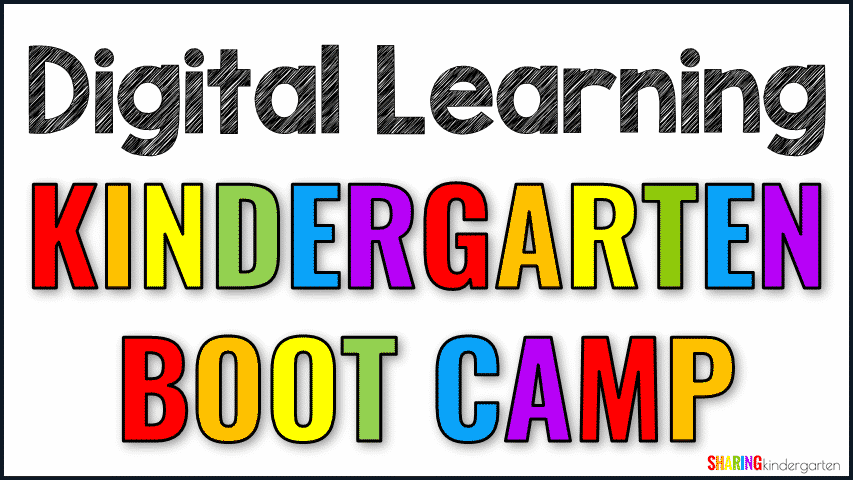
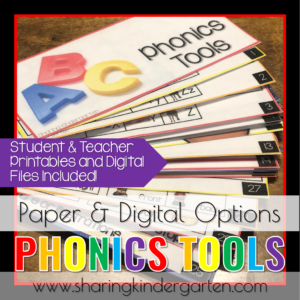
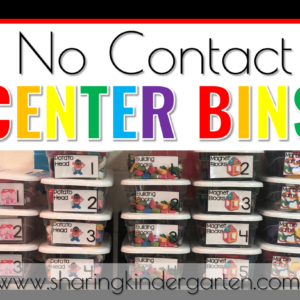
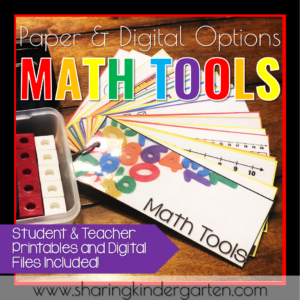

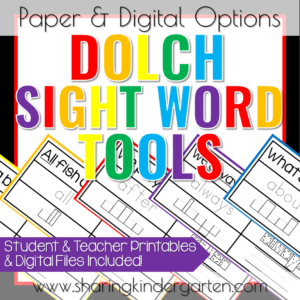

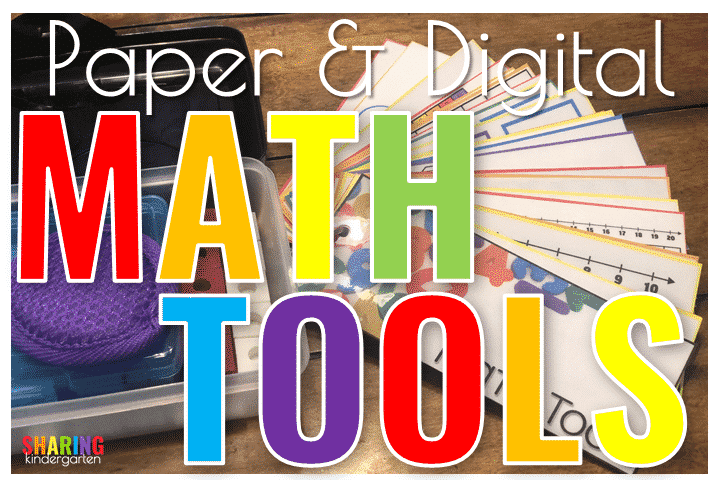
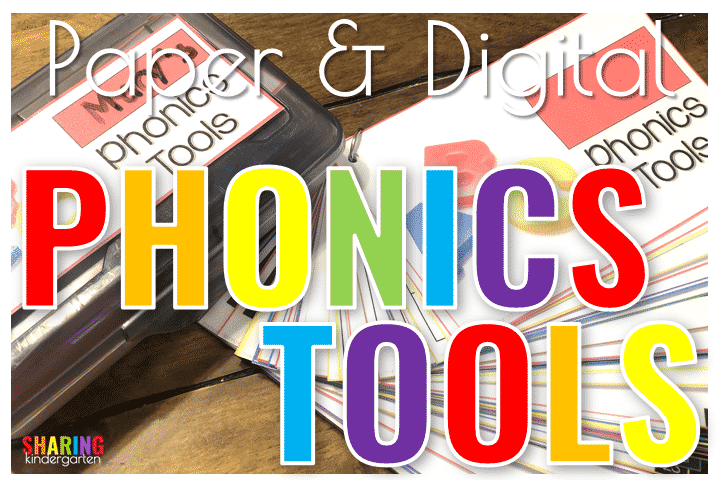
You are amazing and will certainly do well taking on the new normal in education! I respect and pray for each of you. You remind me of myself when I was in the classroom. I have been reading the ever-changing guidelines and am continuously thinking what I would do if I were still teaching.
I am a retired educator of 25 years. I’ve taught 4 year olds, kindergarten, first, third, fifth, and sixth grades, as well as 15 years of resource & inclusion special education.
Thanks for the suggestions. I forgot I would need to do something for my manipulatives. I think I will make a plastic box for each student with varied manipulatives in their box. I teach middle school.
Thank you very much for your wonderful organized center suggestions. I feel less afraid to tackle my year looping back down to Kindergarten from First Grade. We are moving to a play based curriculum with observable goals for each student. I feel this is doable with your suggestions and support.
Gratefully,
Hope
Thank you for your detailed post about centers during this complicated time. I have been teaching for years, but I just finished my first year of teaching Kindergarten which is a whole different ballgame from the other grades. I just couldn’t wrap my brain around the way I was going to do centers, so your post really helped me a lot. Thank you so much! I look forward to reading more from you.
I love this! I noticed you had log blocks as a choice. How would you clean these?
I have a very similar plan but have put my toys into small mesh bags (called reusable produce bags on Amazon) in hopes I can just dunk the whole bag and toys into a disinfectant solution and hang to dry… fingers crossed for all of us!!
This reminds me of my mess kit bag from scout days!! Mesh dish bags that we would dunk and dry…definitely looking into these! Thanks for the idea!
Thank you for sharing—-this seems doable and I think the most important factor (besides students health) is modeling and teaching expectations!
What a great way to organize your centers. Super helpful!
I have been wondering how I was going to do centers this year and now I know!!!! Thank you so much for sharing and helping all teachers of littles!!!
This plan is amazing and very comforting. It’s been very scary thinking about the kids going back to school. Thank you for all your efforts to keep them and their families safe!!!
I may have missed the detail of stated I’m sorry! Is the 24 hour to give you time to clean or for germs to naturally go away from the surfaces?
This is a wait time between cleaning and playing. This is a protocol many daycares have taken. I don’t know if the required wait time will be 24 hours or more.
Hi there! I just purchased and am wondering if the last slide is editable so I can make some of my own that are not already made. If so, how do I do this? I’m having a hard time figuring it out.
Thank you!!
That last slide is open ended but not editable.
Ok, thank you! One last question, what font did you use on the labels?
KG Lego House
I love this idea and was wondering how you manage. I have 17 kiddos and 25 bins. I am not sure If I should assign a bin a week or a couple of days for each child?? Wondering how to make it fair. These bins are for free choice play time. Thank you in advance!!
I did this in my prek class except each of my kids has a large tub with 4 to 6 smaller bins of toys for a 2 week period. After the two weeks they are pulled, cleaned, and redistributed. So far so good!
You have helped me more than you know Wise Lady! I am so grateful and appreciate ALL you share! 😊👍🏻
Thank you so much for sharing your idea. We have coped here in South Africa also using individual containers and spaces for the littles. They have coped extremely well….even teaching teacher a thing or two! As our school year ends we now are looking for a fresh approach when we start with our new groups in January, so thanks for the inspiration. Best wishes to you all who are just starting your new year. It is doable.